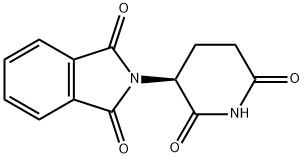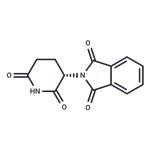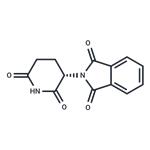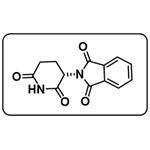Thalidomide has been used to study its teratogenic effects in chicken embryos and human embryonic cells. This study reported that thalidomide causes limb defects by stabilizing PTEN, inhibiting the expression of Akt and activating caspase-dependent apoptosis. Thalidomide has also been used for studying glutathione mediated teratogenic resistance in mouse embryos.
Optically active isomer of Thalidomide, which inhibits FGF-induced angiogenesis. Inhibits replication of human immunodeficiency virus type 1. Teratogenic sedative
ChEBI: A 2-(2,6-dioxopiperidin-3-yl)-1H-isoindole-1,3(2H)-dione that has S-configuration at the chiral centre.
Thalidomide is a stereoisomer, which exists in two enantiomeric states. The S enantiomer is teratogenic. Thalidomide consists of two linked rings, a phthalimide and glutarimide ring.
(-)-Thalidomide selectively inhibits the biosynthesis of tumor necrosis factor α (TNF-α), which is essential for inflammatory response. It is an anti-emetic drug and is used to treat morning sickness in pregnant women. Thalidomide is also used to treat leprosy, multiple myeloma, Crohn′s disease and human immunodeficiency virus (HIV) infection. Thalidomide also inhibits angiogenesis. It is associated with several diseases such as, peripheral neuropathy, facial palsies, Duane syndrome and autism.



